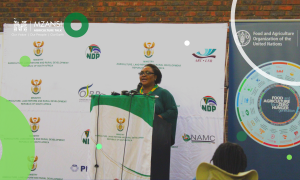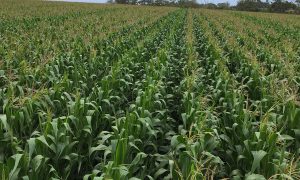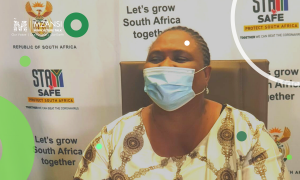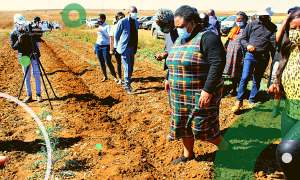Government’s efforts to reindustrialize the textile sector is pivotal to the sustenance of the cotton industry. Chief Executive Officer of Cotton SA, Hennie Bruwer, gives account of the textile industry performance on cotton and whether the South African cotton industry can really chart a new outlook.
Tshepo: Once again Mr Bruwer, thanks for honouring the second part of the cotton series?
Hennie: It’s only our pleasure, and thanks for bringing the cotton industry into the spotlight.
Tshepo: Revisiting our conversation, historically, what impact does the local textile industry have on the cotton industry?
Hennie: Looking back at history, the local textile industry definitely does impact local demand. At the beginning of the millennium, SA’s textile and clothing sector was facing severe challenges. Following China’s inclusion by the World Trade Organisation in 2001, local textile and clothing manufacturers suffered because of the cheaper imports of fabrics and finished products from the East. Adding to this was the termination of the Multi-Fibre Arrangement (MFA) in 2005, which governed the world trade in textiles and garments, imposing quotas on the export from developing countries to developed countries.
Tshepo: Yes, what in the end did this do to the local industry?
Hennie: The textile manufacturing industry’s capacity was reduced to a fraction of what it was in early 2000. Employment in the sector slumped dramatically, resulting in the loss of more than 100 000 textile and clothing jobs. SA in the late 1980’s produced about 80 000 tons of cotton lint, but by 2012, production was down to 5 300 tons.
Tshepo: But what were the efforts to recover from this fall?
Hennie: Through the Cluster programme (as previously mentioned), the local beneficiation of cotton, through local retail demand-driven integrated supply chain programmes, were stimulated. As explained, this 5-year funding programme had come to an end in 2019, again contributing to a decline in the hectares of cotton produced. We are of the view that the new rebate on the yarn levy will have a further negative impact on the spinning and weaving and knitting industry in SA.
Tshepo: You mention that the uncertainty about future Cluster funding has impacted the industry, Is this why some of your farmers shifted to other crops, thus producing less yields?
Hennie: The growth in the hectares of cotton planted has changed in the last two seasons, and the cotton fibre production has shown a decline of about 60% in hectares planted since then. Besides the uncertainty created with no further Cluster funding from government, there were various external factors, including matters as extreme weather conditions, no access to new cotton cultivars, and farmers turning to food crops due to more favourable prices. Additional to this, one of the bigger issues that played a role in the crop of choice for the producers over the past season was the delay of the ginning and marketing of the previous season’s crop, which caused insecurity in the industry and impacted the trust relationships between some of the ginners and the producers. Various engagement sessions have been taking place between the producers and the ginners, resulting in strategic interventions to address these.
Tshepo: We will revisit the strategic interventions later in part three, but for now, in terms of your estimates, what is the current crop forecast?
Hennie: SA’s current estimated crop of just over 80 000 lint bales, which is 36% less than the previous year. SA has good quality cotton which favours our export market. Due to the high demand for our cotton, we do not carry over stock from one year to another. More than 50% of the current estimated lint production has already been committed to the market. The remaining volumes can only be allocated once the cotton has been ginned and graded, taking place between June to September.
Tshepo: Well Hennie, thanks for your time, let’s do it again next week when we discuss the strategic interventions and the cotton industry global nexuses. Hennie: Thanks, Tshepo, looking forward to it.




















